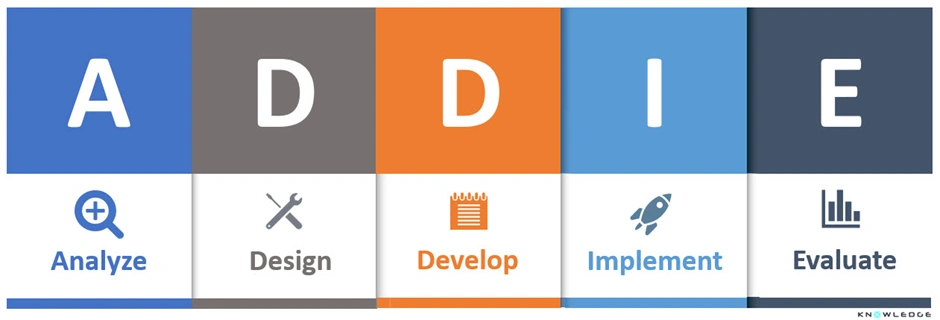
Instructional design serves as the cornerstone of education and training, encompassing the systematic process of creating engaging and effective learning experiences. Whether you’re developing a traditional classroom course, an online module, or a corporate training program, mastering the golden rules of instructional design is essential for achieving optimal learning outcomes. In this comprehensive guide, we’ll delve into ten fundamental principles that instructional designers should follow to create impactful learning experiences.
Understanding Your Audience:

The foundation of effective instructional design lies in knowing your audience inside and out. Before embarking on course creation, conduct thorough audience analysis to gain insights into learners’ demographics, prior knowledge, learning preferences, and motivations. Understanding your audience enables you to tailor your instructional strategies and content to meet their specific needs and expectations. Whether you’re designing for school-aged children, college students, or working professionals, a deep understanding of your audience is crucial for creating relevant and engaging learning experiences.
Setting Clear Learning Objectives:

Clear and concise learning objectives are the compass that guides both instructors and learners throughout the learning journey. Learning objectives should be specific, measurable, achievable, relevant, and time-bound (SMART), providing clear expectations of what learners will be able to accomplish by the end of the course or module. By setting clear learning objectives, instructional designers provide learners with a roadmap for success, outlining the knowledge, skills, and competencies they will acquire through the learning experience.
Leveraging Instructional Design Models:

Instructional design models offer structured frameworks for designing effective learning experiences. Models such as ADDIE (Analysis, Design, Development, Implementation, Evaluation) and SAM (Successive Approximation Model) provide systematic approaches to course development, from initial needs analysis to final evaluation. By following established instructional design models, instructional designers can ensure that their courses are well-organized, coherent, and aligned with learning objectives. These models also facilitate collaboration among instructional design teams, streamlining the design and development process for optimal efficiency and effectiveness.
Embracing Active Learning:
Active learning lies at the heart of effective instructional design, promoting learner engagement, participation, and critical thinking. Unlike passive learning approaches, which rely on rote memorization and information delivery, active learning encourages learners to actively engage with the content through hands-on activities, discussions, simulations, and problem-solving tasks. By incorporating active learning strategies into instructional design, such as flipped classrooms, collaborative projects, and peer teaching, instructional designers can foster deeper understanding, retention, and application of knowledge among learners.
Utilizing Multimedia Effectively:

Multimedia elements such as videos, images, animations, and audio can enhance the visual appeal and interactivity of instructional materials. However, it’s essential to use multimedia judiciously and purposefully, ensuring that it aligns with learning objectives and enhances the learning experience rather than detracting from it. Instructional designers should consider factors such as accessibility, bandwidth limitations, and learner preferences when integrating multimedia into their courses. By selecting and incorporating multimedia elements strategically, instructional designers can create engaging and effective learning experiences that cater to diverse learning styles and preferences.
Designing for Accessibility:
Accessibility is a fundamental principle of instructional design, ensuring that all learners, including those with disabilities, can access and engage with instructional materials effectively. Instructional designers should adhere to accessibility standards such as the Web Content Accessibility Guidelines (WCAG) to ensure that their courses are inclusive and barrier-free. This includes providing alternative formats for content, incorporating descriptive captions and transcripts for multimedia elements, and designing user-friendly interfaces. By designing for accessibility from the outset, instructional designers can create learning experiences that are accessible to learners of all abilities, fostering a more inclusive and equitable learning environment.
Providing Timely Feedback:

Feedback plays a crucial role in the learning process, providing learners with valuable insights into their progress and performance. Instructional designers should incorporate timely and constructive feedback mechanisms throughout the learning experience, including formative assessments, quizzes, peer reviews, and instructor feedback. Timely feedback helps learners identify areas for improvement, reinforce learning outcomes, and stay motivated throughout the learning journey. By providing regular feedback loops, instructional designers empower learners to track their progress, address any misconceptions or gaps in understanding, and achieve their learning goals more effectively.
Facilitating Collaboration and Social Learning:
Collaboration and social learning are essential components of effective instructional design, enabling learners to engage with peers, share insights, and co-create knowledge together. Instructional designers should incorporate collaborative learning activities such as group discussions, team projects, and peer reviews into their courses to foster interaction and knowledge exchange among learners. Social learning platforms, online forums, and community-building activities can also facilitate peer support and collaboration outside of the classroom. By embracing collaboration and social learning, instructional designers create dynamic and interactive learning environments that encourage active participation and engagement among learners.
Embracing Continuous Improvement:
Instructional design is an iterative process that requires ongoing evaluation and refinement to ensure optimal effectiveness. Instructional designers should embrace a culture of continuous improvement, gathering feedback from learners, instructors, and stakeholders and using this feedback to refine and enhance instructional materials. By conducting regular evaluations of learning outcomes, course effectiveness, and learner satisfaction, instructional designers can identify areas for improvement and implement changes to enhance the learning experience. By embracing continuous improvement, instructional designers demonstrate their commitment to delivering high-quality learning experiences that meet the evolving needs of learners and stakeholders alike.
Evaluating Learning Outcomes:

Ultimately, the success of instructional design efforts is measured by their impact on learning outcomes. Instructional designers should evaluate learning outcomes against predefined objectives using a variety of assessment methods, including quizzes, exams, projects, and performance evaluations. By collecting data on learner performance, knowledge retention, and skill acquisition, instructional designers can assess the effectiveness of their instructional materials and identify areas for improvement. Evaluating learning outcomes also provides valuable insights into the overall effectiveness of the instructional design process, helping instructional designers refine their approach and enhance future learning experiences.
Conclusion:
Mastering instructional design requires a deep understanding of the fundamental principles and best practices that govern the design and development of effective learning experiences. By following the golden rules outlined in this guide, instructional designers can create engaging, impactful, and learner-centered courses that empower learners to achieve their goals. Whether you’re designing for a traditional classroom setting, an online platform, or a corporate training program, integrating these principles into your instructional design process can lead to more effective and meaningful learning outcomes for learners of all ages and backgrounds.




